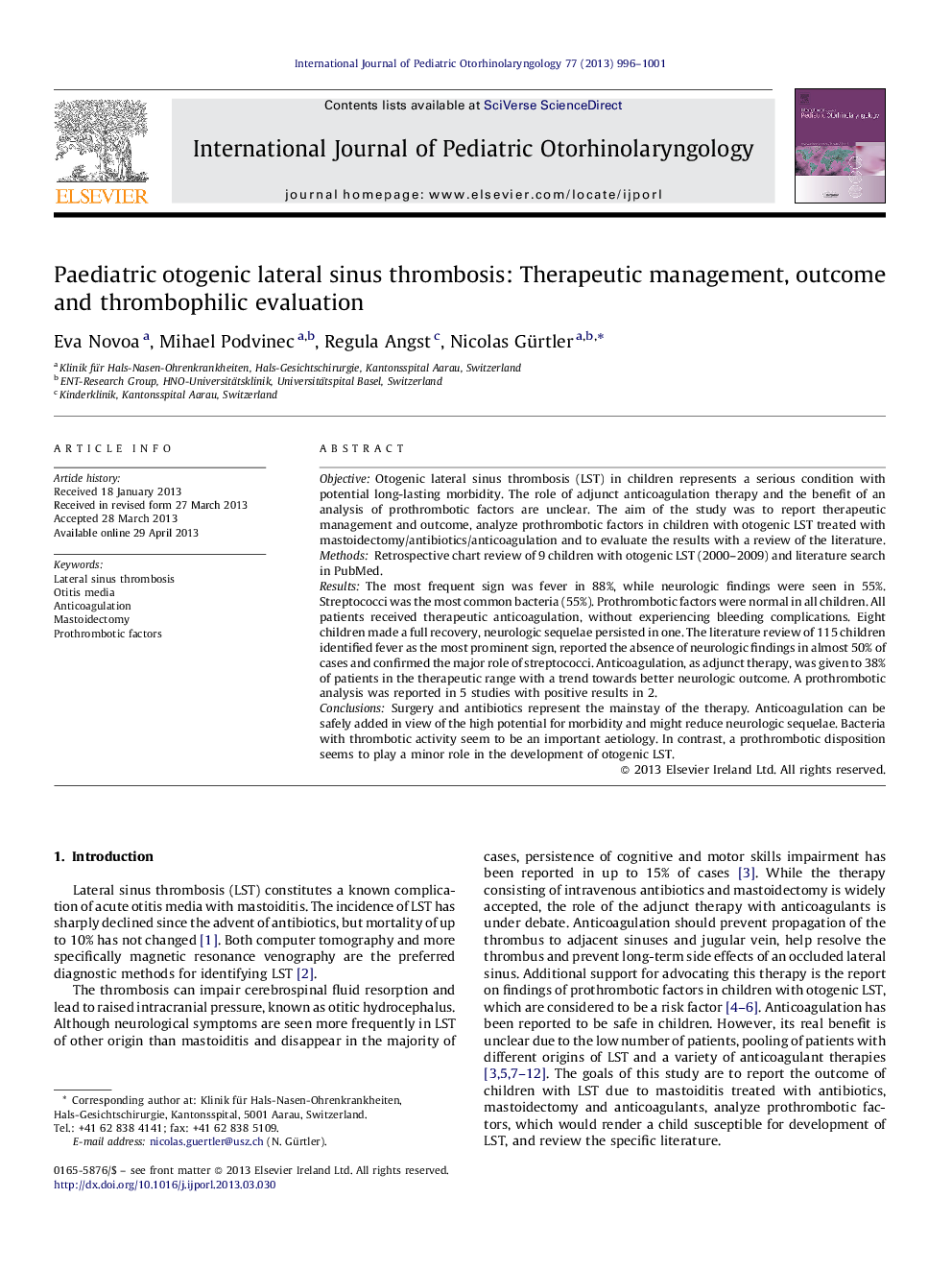| Article ID | Journal | Published Year | Pages | File Type |
|---|---|---|---|---|
| 6213700 | International Journal of Pediatric Otorhinolaryngology | 2013 | 6 Pages |
ObjectiveOtogenic lateral sinus thrombosis (LST) in children represents a serious condition with potential long-lasting morbidity. The role of adjunct anticoagulation therapy and the benefit of an analysis of prothrombotic factors are unclear. The aim of the study was to report therapeutic management and outcome, analyze prothrombotic factors in children with otogenic LST treated with mastoidectomy/antibiotics/anticoagulation and to evaluate the results with a review of the literature.MethodsRetrospective chart review of 9 children with otogenic LST (2000-2009) and literature search in PubMed.ResultsThe most frequent sign was fever in 88%, while neurologic findings were seen in 55%. Streptococci was the most common bacteria (55%). Prothrombotic factors were normal in all children. All patients received therapeutic anticoagulation, without experiencing bleeding complications. Eight children made a full recovery, neurologic sequelae persisted in one. The literature review of 115 children identified fever as the most prominent sign, reported the absence of neurologic findings in almost 50% of cases and confirmed the major role of streptococci. Anticoagulation, as adjunct therapy, was given to 38% of patients in the therapeutic range with a trend towards better neurologic outcome. A prothrombotic analysis was reported in 5 studies with positive results in 2.ConclusionsSurgery and antibiotics represent the mainstay of the therapy. Anticoagulation can be safely added in view of the high potential for morbidity and might reduce neurologic sequelae. Bacteria with thrombotic activity seem to be an important aetiology. In contrast, a prothrombotic disposition seems to play a minor role in the development of otogenic LST.
